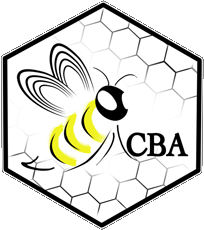

Arguments for Using Chemicals, judiciously
Using chemicals sounds far from ideal, especially when it is close to a food product (honey). However, most of our agriculture is enhanced with the use of chemicals, be that fertiliser, protein augmented animal feed etc. The question is, what can we do to maintain the health of our bees, while making sure that any introduced chemicals do not get into the foodstuff or harm the environment. We use chemicals all the time in our own foods, indeed, we are 100% chemicals ourselves! Chemicals should not be a dirty word. When we need a boost, we take vitamins, protein shakes, when we are ill we take antibiotics, when illness can be avoided we innoculate ouselves. As long as the chemicals we use in our hives are used at the correct dose at the correct time, they do not affect the honey, and can improve our bees chance against diseases, they should be considered of benefit. Chemical free-sounds great while the bees are healthy, but sometimes an ounce of prevention is worth a pound of cure (or worse).
American Foulbrood
Perhaps one of the most demoralizing illnesses that a colony can contract, since it requires quarantine and the destruction of the hive by fire, since it is so contagious, is American Foulbrood. Fortunately, it is also easily and cheaply prevented. This disease is a bacterial infection that is naturally present in the environment, and can be contracted when the bees are out foraging, or from contaminated equipment or tools. It is spread to the larvae back in the hive, which then turn to a brownish mush - not good.
Always clean your hive tools between hives with alcohol. If you buy used equipment, make sure there is no disease history by asking the vendor and checking with the Provincial Apiary Insector, Fletcher Colpitts. If in doubt, buy new. Treat your brood chambers in the spring and fall by simply dusting "Foulbrood Mix" powder (a mix of Terramycin and sugar) around the edge of the brood, in all brood supers. Repeat treatment when taken down into the cells. The treatment should be done in the spring, before the honey supers go on, and in the fall, after the honey supers have been removed, to avoid contaminating honey.
Mites
Although much is made of treating for mites, several local beekeepers have reported that they have rarely seen a mite, either on their bees or on the drone larvae, where they tend to congregate. Yet great weight is often placed on the various treatments, either chemical or non-chemical. The chemical strip treatments in many cases are quite expensive and need to be applied with exact timing to remain effective over time. In truth, if you dont have significant mites (check using a alcohol shaker) perhaps you may need no treatments. If you do want to treat, it is good to alternate chemicals to reduce the liklihood that the bees will build up resistance. There are formic or oxalic acids (both organic acids), or strips that can be hung in the hive impregnated with medications - Apivar and Apistan are examples.
Nosema
Nosema is a fugal parasite that can particularly affect honeybees in the spring. It gives the bees bowel problems and they may be seen to leave fluidy poop trails on the side of the hives and they try and heave the hive on their cleansing flights, but dont quite make it out in time. Again it is easily prevented, with Fumidil powder added to the first gallon of sugar syrup in the fall and spring.
Wax moth
Fortunately for us in Atlantic Canada, we have long, frigid winters. This isn't usually a plus, but if you store your empty supers in an unheated space, all forms of the wax moth (egg, larvae, pupae and adult) are killed by prolonged freezing (more than a day or so). Make sure the supers cannot be entered by mice, as they can do their share of damage.